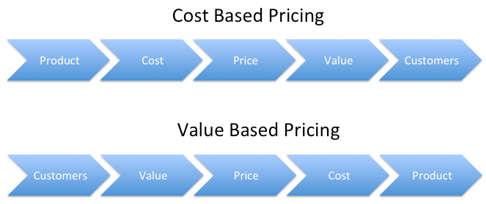Setting price of WiFi projects: value-based pricing and room-based pricing

In the previous post, we discussed about the cost-based and the competition-based pricing methods (that can be used for any product) and I provided an Excel Worksheet to price WiFi projects.
Read the first post here>>
In this post, we will discuss about two other Pricing Methods that can be used for Wi-Fi projects:
– value-based pricing
– room-based pricing (that is conceived for hotels, B&B, resorts, campings, etc.)
3rd method
VALUE-BASED PRICING / VALUE OPTIMIZED PRICING

Value-based pricing is the most efficient but most difficult method to price products and services. It completely ignores the production / deployment costs; instead, it is set on the perceived or estimated value of the service/product to the customer.
USE THIS METHOD IF:
- You made a research on your market and your competitors
- You know the needs and pains of your prospect customers
- If your solution fits the customers’ real needs.
DON’T USE THIS METHOD IF:
- You don’t know well your market and your prospect customers
- You feel there are too many competitors that provide a better service than yours.
DOWNLOAD THE EXCEL CALCULATOR
HOW TO USE THE EXCEL CALCULATOR FOR VALUE-PLUS PRICING:
Unfortunately, there’s no way to calculate your value-based pricing. We suggest you to conduct a detailed research on your prospect customers, understand their needs and pain points.
The key questions are:
- Which is your main challenge / need / pain point?
- What’s your cost of not solving this problem?
- Which KPIs are really important to you?
- How much would you be willing to pay to reach your goal?
If your solution perfectly fits the customer’s needs, solves their main problems, adds a large value, you can estimate your price.
TIPS AND TRICKS
- Interview your customers and get information about what they need from you
- If the value-based pricing is lower than the cost-plus pricing, maybe your costs are too high or the perceived value is too low.
- Once you have calculated your price, test it with a few prospects. Try to understand if it’s reasonable for the customers, too high, or too low.
4th method
ROOM-BASED PRICING (FOR HOTELS, B&B, CAMPINGS, ETC.)
This method should be applied to price Wi-Fi solutions for hotels, B&Bs, campings, etc.
The end user price stands in direct proportion with the number of rooms of the location, the average occupancy during the whole year, the average price per room.
USE THIS METHOD IF:
- You’re selling a Wi-Fi solution to hotels, B&Bs, campings, resorts, etc.
DON’T USE THIS METHOD IF:
- Your product has a perfect fit with the customers’ needs (use value-based pricing instead)
- Your costs are high and cost-plus pricing (with low margins) would be higher than room-based pricing
- Don’t use this method to avoid conducting your own pricing research.
DOWNLOAD THE EXCEL CALCULATOR
HOW TO USE THE EXCEL CALCULATOR FOR ROOM-BASED PRICING:
If you chose this method, fill the file with this information:
- Number of rooms
- Average occupancy throughout the year
- Average price per room
- A small & that will determine the price for Wi-Fi over over the total price per room
You will get the per-room monthly price and the hotel monthly price. This price, in some cases, could be inclusive of your support / troubleshooting / etc. We suggest to split hardware costs (not included) and software / service costs (calculated with this method).
TIPS AND TRICKS
- Your per-room price won’t depend on the number of deployed access points. Compare this pricing with cost-plus pricing (cost-plus pricing should be lower than room-based pricing, in the best case).
- Don’t stop testing your price. Once you have calculated your price, test it with a few prospects. Try to understand if it’s reasonable for the customers, too high, or too low.
